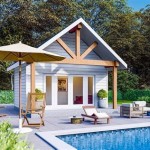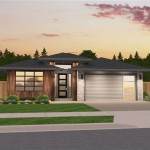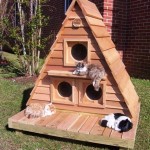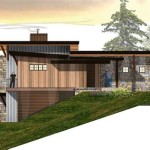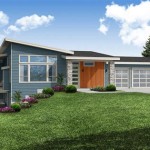Angled house plans refer to architectural designs that incorporate angles and non-rectangular shapes into the layout of a home. By deviating from traditional square and rectangular forms, angled house plans offer unique aesthetic appeal and functional advantages.
One key advantage of angled house plans is their ability to maximize space and natural light. The strategic placement of angles can create additional nooks and crannies, providing extra space for storage, seating, or specialized areas. Additionally, angled walls allow for larger windows and skylights, flooding the home with natural light and creating a sense of openness.
Now that we have explored the basic concept and benefits of angled house plans, let’s delve into the various architectural considerations, design elements, and practical implications of these unique home designs.
Angled house plans offer several key advantages and considerations:
- Maximize space and natural light
- Create unique aesthetic appeal
- Provide additional nooks and crannies
- Allow for larger windows and skylights
- Can be more challenging to design and build
- May require specialized construction techniques
- Can impact furniture placement and interior design
- May offer unique challenges for roofing and drainage
- Can increase construction costs
Overall, angled house plans offer a range of benefits and challenges that should be carefully considered during the design and construction process.
Maximize space and natural light
Angled house plans offer several advantages when it comes to maximizing space and natural light.
- Strategic placement of angles creates additional space: By incorporating angles into the layout, architects can create additional nooks and crannies that can be used for storage, seating, or specialized areas such as home offices or reading corners.
- Angled walls allow for larger windows and skylights: Angled walls provide more opportunities for windows and skylights, which can flood the home with natural light and create a sense of openness. This is especially beneficial in areas with limited sunlight or in homes that are surrounded by other buildings.
- Natural light can reduce energy consumption: By maximizing natural light, angled house plans can reduce the need for artificial lighting, leading to lower energy consumption and utility bills.
- Natural light can improve well-being: Studies have shown that exposure to natural light can improve mood, boost productivity, and enhance overall well-being.
Overall, angled house plans offer a range of benefits when it comes to maximizing space and natural light, creating homes that are both functional and inviting.
Create unique aesthetic appeal
Angled house plans offer a range of unique aesthetic advantages that set them apart from traditional rectangular homes.
Dynamic and visually interesting exteriors: Angled walls and roofs create a dynamic and visually interesting exterior that is sure to turn heads. The interplay of angles and planes can create a sense of movement and energy, making the home stand out from its surroundings.
Customizable designs: Angled house plans allow for a high level of customization, as the angles and shapes can be tailored to the specific needs and preferences of the homeowner. This flexibility allows architects to create truly unique and personalized homes that reflect the individual style of the owner.
Modern and contemporary aesthetic: Angled house plans are often associated with a modern and contemporary aesthetic, as the use of angles and non-traditional shapes aligns with the clean lines and geometric forms that are characteristic of modern architecture.
Enhanced curb appeal: The unique and eye-catching appearance of angled house plans can significantly enhance the curb appeal of a home. The dynamic angles and shapes create a visually appealing exterior that is sure to impress visitors and potential buyers.
Overall, angled house plans offer a range of unique aesthetic advantages that can create homes that are both visually striking and highly customizable.
Provide additional nooks and crannies
Angled house plans offer a unique advantage in terms of providing additional nooks and crannies within the home.
- Awkward spaces transformed into functional areas: Angled walls and non-rectangular shapes can transform awkward spaces into functional and inviting areas. For example, a small alcove created by an angled wall can be used as a cozy reading nook or a dedicated workspace.
- Hidden storage solutions: Angled walls and ceilings can provide opportunities for hidden storage solutions. Custom-built cabinetry or shelves can be integrated into these spaces, providing ample storage without sacrificing valuable floor space.
- Nooks for specialized purposes: Angled house plans can accommodate nooks that are designed for specific purposes. For example, a small nook could be dedicated to a home office, a meditation space, or a children’s play area.
- Enhanced privacy and separation: Nooks and crannies can also provide a sense of privacy and separation within the home. Angled walls can create natural dividers between different areas, such as the living room and dining room, without completely closing them off.
Overall, the additional nooks and crannies provided by angled house plans offer increased functionality, storage space, and opportunities for privacy and separation within the home.
Allow for larger windows and skylights
Angled house plans offer a unique advantage in terms of allowing for larger windows and skylights, which can significantly enhance the natural light and openness of the home.
- Increased natural light: Angled walls and non-rectangular shapes allow for larger windows and skylights to be incorporated into the design of the home. This increased natural light can create a brighter and more inviting living environment, reducing the need for artificial lighting during the day.
- Improved views: Larger windows and skylights can provide stunning views of the surrounding landscape, bringing the outdoors in and creating a stronger connection between the home and its environment.
- Enhanced sense of space: Natural light has the ability to make spaces feel larger and more open. By incorporating larger windows and skylights into angled house plans, architects can create homes that feel more spacious and airy.
- Reduced energy consumption: Larger windows and skylights can also help to reduce energy consumption by maximizing natural light and reducing the need for artificial .
Overall, the ability of angled house plans to accommodate larger windows and skylights offers significant benefits in terms of natural light, views, sense of space, and energy efficiency.
Can be more challenging to design and build
Angled house plans can be more challenging to design and build compared to traditional rectangular homes due to several factors:
Complex rooflines: Angled walls and non-rectangular shapes often result in complex rooflines, which can increase the cost and complexity of construction. The design and engineering of the roof must carefully consider the angles and intersections of the different roof planes to ensure structural integrity and prevent leaks.
Custom materials and components: Angled house plans may require custom materials and components that are not readily available or more expensive than standard materials. This can include specialized windows, doors, and roofing materials that are designed to fit the unique angles of the home.
Specialized construction techniques: The construction of angled house plans often requires specialized construction techniques and skilled craftsmen. Carpenters and builders must have the expertise to work with angles and non-traditional shapes, which can add to the cost and timeline of the project.
Potential for errors: The complexity of angled house plans increases the potential for errors during the design and construction process. It is crucial to have a skilled and experienced architect and builder involved in the project to minimize the risk of errors and ensure the structural integrity of the home.
Overall, the challenges associated with designing and building angled house plans can impact the cost, timeline, and overall complexity of the project. It is important to carefully consider these challenges and work with experienced professionals to ensure a successful outcome.
May require specialized construction techniques
Angled house plans may require specialized construction techniques to ensure structural integrity and achieve the desired aesthetic.
- Complex framing systems: Angled walls and non-rectangular shapes require more complex framing systems than traditional rectangular homes. Carpenters must carefully calculate and assemble the framing members to ensure the structural stability of the home.
- Precise cutting and fitting: Angled walls and non-traditional shapes demand precise cutting and fitting of building materials. Specialized tools and techniques are often necessary to ensure that materials fit together seamlessly and maintain the integrity of the structure.
- Custom joinery: Angled house plans often incorporate custom joinery techniques to connect different building components at non-standard angles. Skilled craftsmen are required to create custom joints that are both structurally sound and aesthetically pleasing.
- Specialized roofing techniques: Complex rooflines and angles require specialized roofing techniques to ensure proper drainage and prevent leaks. Roofers must have the expertise to work with non-traditional roof shapes and materials.
Overall, the specialized construction techniques required for angled house plans demand skilled craftsmen and careful attention to detail. Proper planning and execution are crucial to ensure the structural integrity and aesthetic appeal of the home.
Can impact furniture placement and interior design
Angled house plans can significantly impact furniture placement and interior design due to the unique angles and non-rectangular shapes that characterize these homes.
Non-standard wall angles: Angled walls create non-standard angles within the home, which can make it challenging to place furniture in a traditional way. Standard furniture pieces may not fit well against angled walls, leaving awkward gaps or creating an unbalanced look.
Limited furniture options: The unique angles of angled house plans may limit the furniture options available to homeowners. Custom-made furniture or specialized pieces may be necessary to fit the specific angles and shapes of the home, which can be more expensive and time-consuming to acquire.
Creative design solutions: Angled house plans require creative design solutions to overcome the challenges of furniture placement and interior design. Architects and interior designers must carefully consider the angles and shapes of the home when selecting furniture anding the layout to create a cohesive and visually appealing space.
Overall, the impact of angled house plans on furniture placement and interior design requires careful planning and creative solutions to achieve a functional and aesthetically pleasing living environment.
May offer unique challenges for roofing and drainage
Angled house plans can introduce unique challenges for roofing and drainage systems due to the non-rectangular shapes and complex rooflines that characterize these homes.
Complex roof geometry: Angled walls and non-traditional roof shapes create complex roof geometry, which can make it challenging to design and install a roofing system that is both functional and aesthetically pleasing. Roofers must carefully consider the angles and intersections of different roof planes to ensure proper water drainage and prevent leaks.
Custom flashing and detailing: The unique angles and shapes of angled house plans often require custom flashing and detailing to ensure watertight seals and prevent water penetration. Roofers must have the expertise to fabricate and install custom flashing and detailing that conforms to the specific angles and shapes of the home.
Drainage system design: The drainage system for angled house plans must be carefully designed to accommodate the unique roof geometry and ensure proper water flow. Gutters and downspouts must be strategically placed and sized to effectively collect and discharge rainwater, preventing water buildup and potential damage to the home.
Overall, the challenges associated with roofing and drainage in angled house plans require skilled roofers and careful attention to detail to ensure the long-term performance and integrity of the home.
Can increase construction costs
Angled house plans can lead to increased construction costs compared to traditional rectangular homes due to several factors:
Complex framing systems: Angled walls and non-rectangular shapes require more complex framing systems, which can be more time-consuming and labor-intensive to build. This increased complexity can drive up the cost of materials and labor.
Custom materials and components: Angled house plans may require custom materials and components that are not readily available or more expensive than standard materials. For example, custom-sized windows, doors, and roofing materials may be necessary to fit the unique angles of the home.
Specialized construction techniques: The construction of angled house plans often requires specialized construction techniques and skilled craftsmen. Carpenters and builders must have the expertise to work with angles and non-traditional shapes, which can increase the cost of labor.
Potential for errors: The complexity of angled house plans increases the potential for errors during the design and construction process. Errors can lead to costly delays and rework, further increasing the overall construction costs.
Overall, the increased complexity, custom materials, specialized construction techniques, and potential for errors associated with angled house plans can result in higher construction costs compared to traditional rectangular homes.










Related Posts

